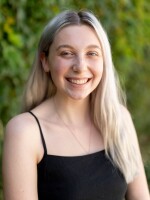After the launch of his science project on a NASA rocket was postponed because of the coronavirus pandemic, Dylan Rice and his family decided to book a trip to see the new launch in Virginia.
When the package with the experiment was lost in the mail, it was too late to cancel the trip.
“The rocket still launched, just without our project on it,” Rice said.
A science experiment designed by two students is scheduled to be launched into space on a NASA rocket on Friday after a three-year delay.
Rice and his partner, Biraj Pokhrel, helped develop the experiment as a part of the Cubes in Space SR-7 Mission while attending Sperreng Middle School in Sappington in 2019.
Although it’s been a few years, Pokhrel said it’s still surreal to know that he could finally finish the experiment this week.
“It’s one of those things where you know that eventually, it’s going to happen, but when it does actually happen, I’m not going to believe it,” Pokhrel said. “Something I made is going to go into space.”
Pokhrel and Rice are now rising juniors at Lindbergh High School in St. Louis. When the two started the project in middle school, they were seeking the answer to one question: “Can the plastic from 3D printers actually withstand space travel?”
The cubes were initially scheduled to launch in 2020, but the launch was delayed because of COVID-19. FedEx then lost the cubes ahead of the second launch in 2021, which pushed the project into a third attempt this year.

The students’ experiment involved producing plastic pieces using their school’s 3D printer and placing them inside cubes to see what happens during space travel.
The cubes contain different types of plastics that are different sizes. The experiment could help scientists determine if tools could be made in space using 3D printers and what kinds of plastics could survive the rigors of space flight.
The NASA rocket will launch from the Wallops Flight Facility in Virginia carrying 80 cubes with student experiments.
Dr. Lauren Boeger, the principal of Sperreng Middle School in the Lindbergh school system, helped implement the course in 2019 where Pokhrel and Rice developed the experiment.
The program – called Design Time – allowed students to choose different courses based on what they were interested in. The choice, Boeger said, is really how she saw the students thrive in the classroom.
In the courses, students would identify a problem that they would try to solve using an original design.
The courses weren’t just about science and math, she said. Students were able to learn about topics from fashion design to catapults to yoga.
“They're seeing a relevance and a connection to a potential career [and] literally busting out of the walls of Sperreng Middle School,” Boeger said.
After the delays over the last three years, Rice said he’s hoping the experiment finally makes it to space.
“I’m hoping that it does launch and it doesn’t get delayed again,” Rice said.
The launch will be live-streamed on the NASA Wallops YouTube channel on Friday at 4:30. The launch was originally scheduled for June 22, but was pushed to Friday because of weather concerns and technical issues, according to the Lindbergh Schools Communications Department.
Farrah Anderson is the newsroom intern at St. Louis Public Radio. Follow her on Twitter: @farrahsoa.




